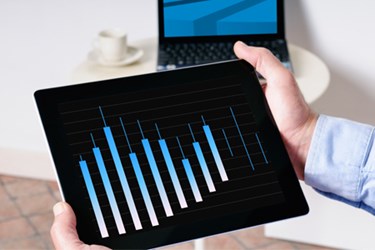Only The Analytical Survive: A New Era In Retail

By Seymour Duncker, co-founder and CEO, iCharts
Retail has always been in the forefront of business intelligence (BI). From the days of on-premises machines to today’s cloud-based solutions, retail has looked for new ways learn about their customers and discover new ways to serve them.
Since the beginning of BI, companies that better understood their data generally came out on top. Today, data is more important than ever. From the highest levels of management to the boots on the ground, there’s a critical need for real-time insights. In order to survive, retailers big and small, online and physical, must change how they use data and analytics.
How Retail IT Has Changed
IT is no longer just a piece of infrastructure; it’s a critical source of insight. What was once seen as part of the cost of doing business has already become a crucial part of market research.
Things have changed on the hardware side, too. Twenty years ago, most servers were kept on-site and maintained by a dedicated staff. Today, all but the largest and most tech-focused companies handle their IT in the cloud. But even cloud-based data warehousing services such as AWS still require a bit of management. It’s essentially a cloud version of an on-premises solution.
The IT industry as a whole is shifting towards a completely service-based model. All of one’s IT needs — including infrastructure, platforms, and just about anything you can imagine — is available as a service. Instead of building internal systems, companies can simply subscribe to a flexible, inexpensive service that delivers the solutions they need.
Even Sears Home and Outlet, once synonymous with traditional retail, has announced it will be the first billion-dollar retailer that doesn’t own a single server. Combined with data warehousing services, the need for physical hardware has waned. This is where retail is headed.
How Retail Analytics Have Changed
Analytics technology has followed a similar path. Not long ago, analytics meant a big machine and a big maintenance staff, all for a few insights that took months to prepare. As IT moves to a service model, so too does analytics. A new breed of analytics has emerged that’s lightweight, inexpensive, and flexible — all while offering performance that used to require a dedicated machine. Instead of integrating with underlying data, this new breed of analytics sits on top of the existing data sources. This allows you to explore the data through simple interfaces without the need to model it first.
Furthermore, modern analytics aren’t simply more accessible, they’re more useful. Today’s analytics can analyze just about anything, down to the performance of a specific SKU, all on the fly. Best of all, because these are cloud-based technologies, they typically work on any computer with a web browser.
What’s Next For Retail Analytics
Every day, retail becomes more data-driven. Modern analytics can deliver deeper insights than ever before, and to more people than ever before. While the traditional audience for analytics is executives and accountants, the next phase allows floor workers, cashiers, and managers to benefit from analytics as well. When you give every employee real-time analytics they can use to do their job more efficiently, the effect is powerful.
The retail industry as a whole is at a crossroads, and businesses must adapt or die. Analytics specifically represents a way forward. It may never turn your business into the next Amazon, but it just might keep you in business.
About The Author
Seymour Duncker is the CEO and co-founder of software startup iCharts, a native cloud-based business intelligence and data visualization platform that allows you to build analytics without leaving your dashboard. Duncker is a serial entrepreneur and has been involved with several successful startups and technology innovations, including assisting senior management with product strategy at SAP. His passion is technology and data and he holds several patents in the area of creating, embedding and sharing of interactive charts.
